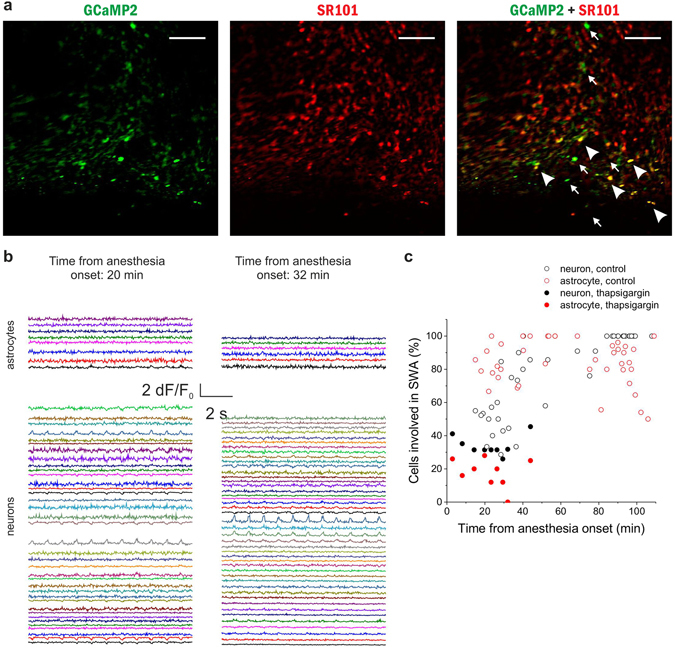Figure 8.

Specific reduction of the astrocytic Ca2+ transients by thapsigargin inhibits synchronization in both astrocytes and neurons in vivo. (A) Expression of GCaMP2 (green), labeling of astrocytes with SR101 (red). Both neurons (some marked by arrows) and astrocytes (some marked by arrowheads) express GCaMP2. Scale bars: 100 µm (B) Left: 10-sec segments of ∆F/F0 fluorescent intensity traces of all identified astrocytes (n = 8) and neurons (n = 37) in the imaged area at 20 min following anesthesia. Right: 10-sec segments of ∆F/F0 fluorescent intensity traces of all identified astrocytes (n = 6) and neurons (n = 46) in the imaged area at 32 min following anesthesia. Different cells were imaged at 20 and 32 min. Thapsigargin was applied 30 min before the experiment. (C) The ratio of astrocytes (red) and neurons (black) showing repetitive, UP state-related Ca2+ transients in percentage of all astrocytes or neurons, respectively, in the field of view of the same P38 rat in the presence of thapsigargin (solid markers). Individual markers represent data from each 300-sec imaging sessions. Empty markers represent the ratio of astrocytes (red) and neurons (black) showing repetitive, UP state-related Ca2+ transients in the absence of thapsigargin. Note that large-scale synchronization is inhibited by thapsigargin in both neurons and astrocytes. All data were recorded from the V1 area of a P38 rat (n = 9 imaging session, 300 s each).
